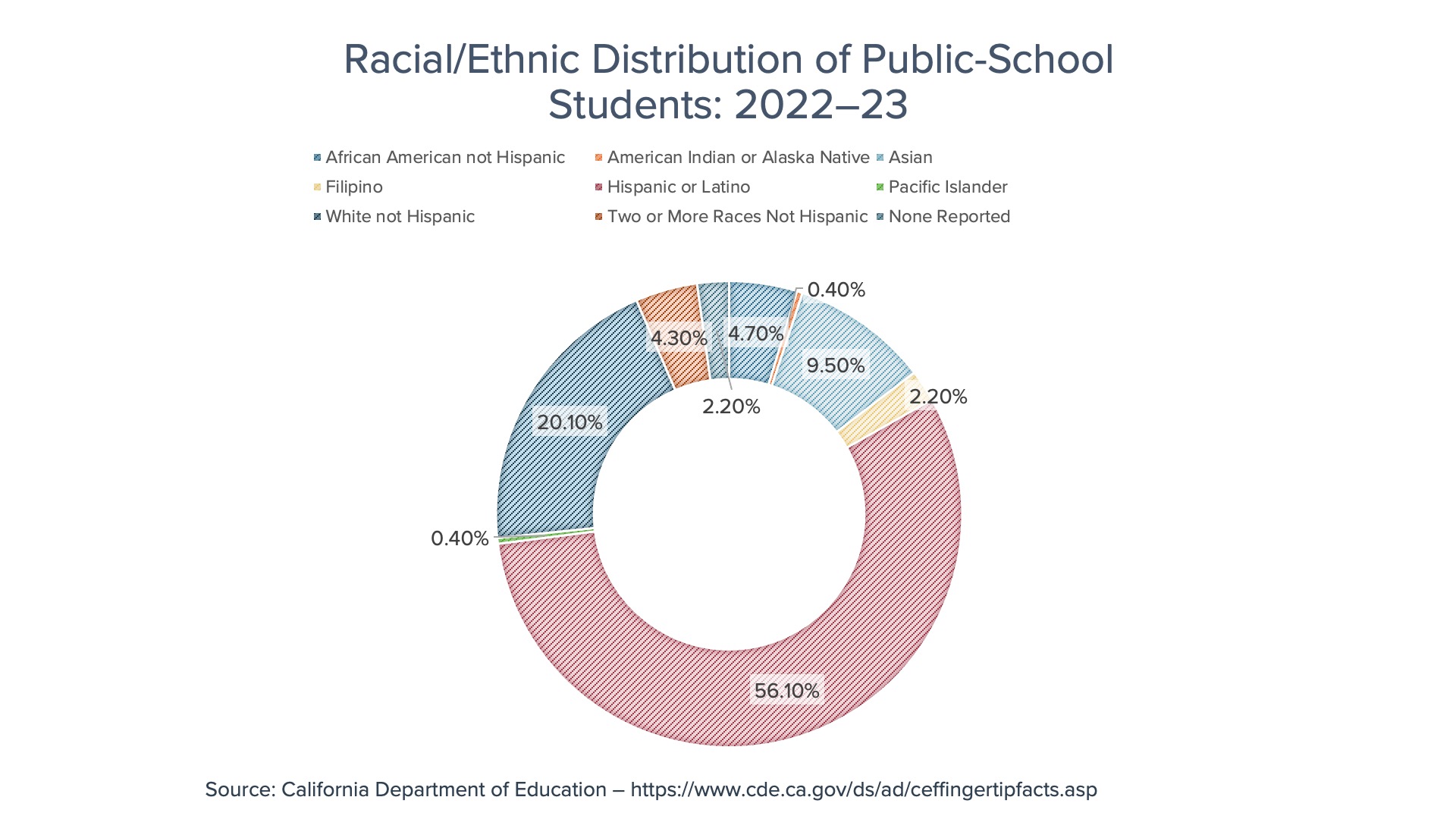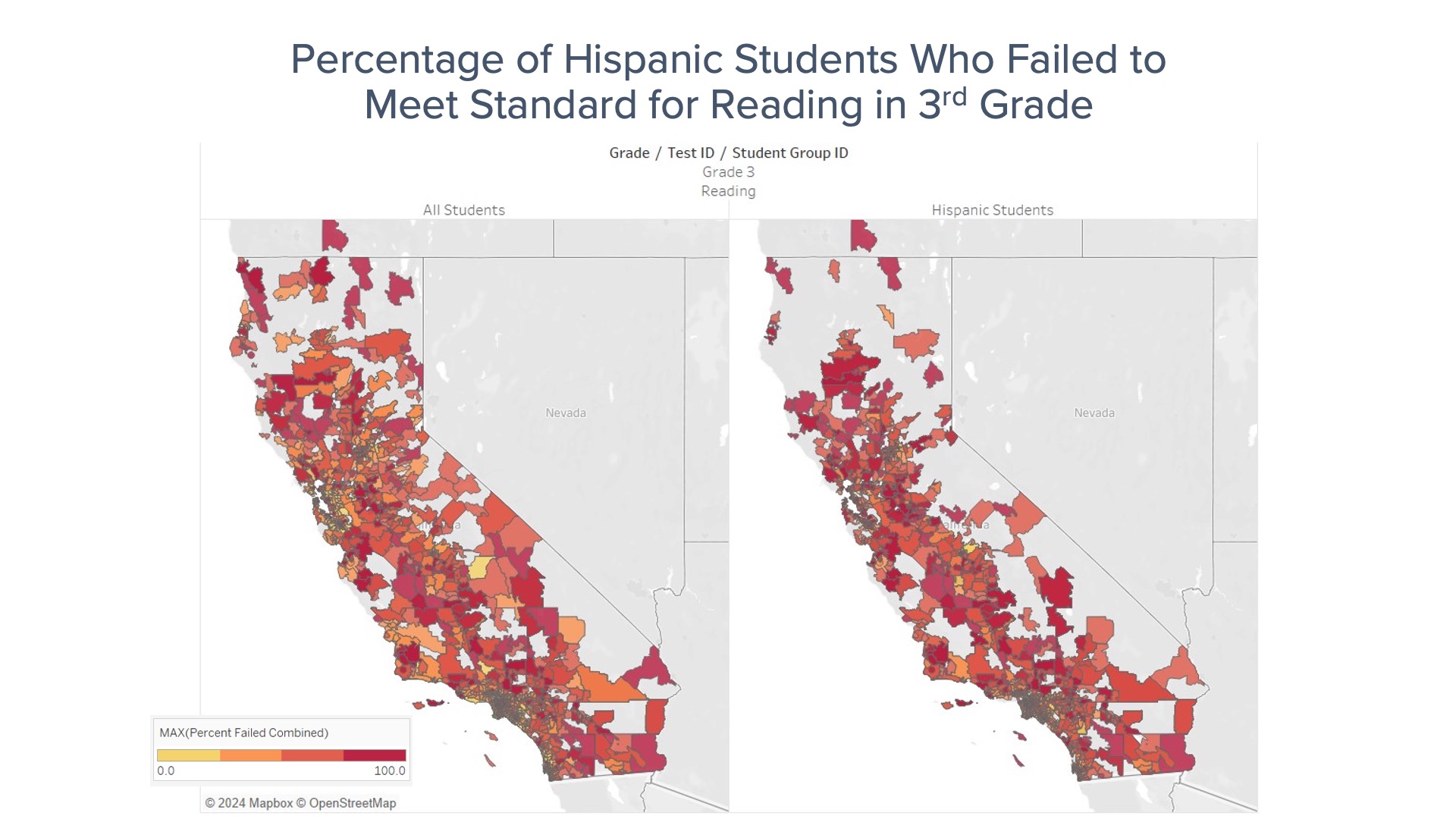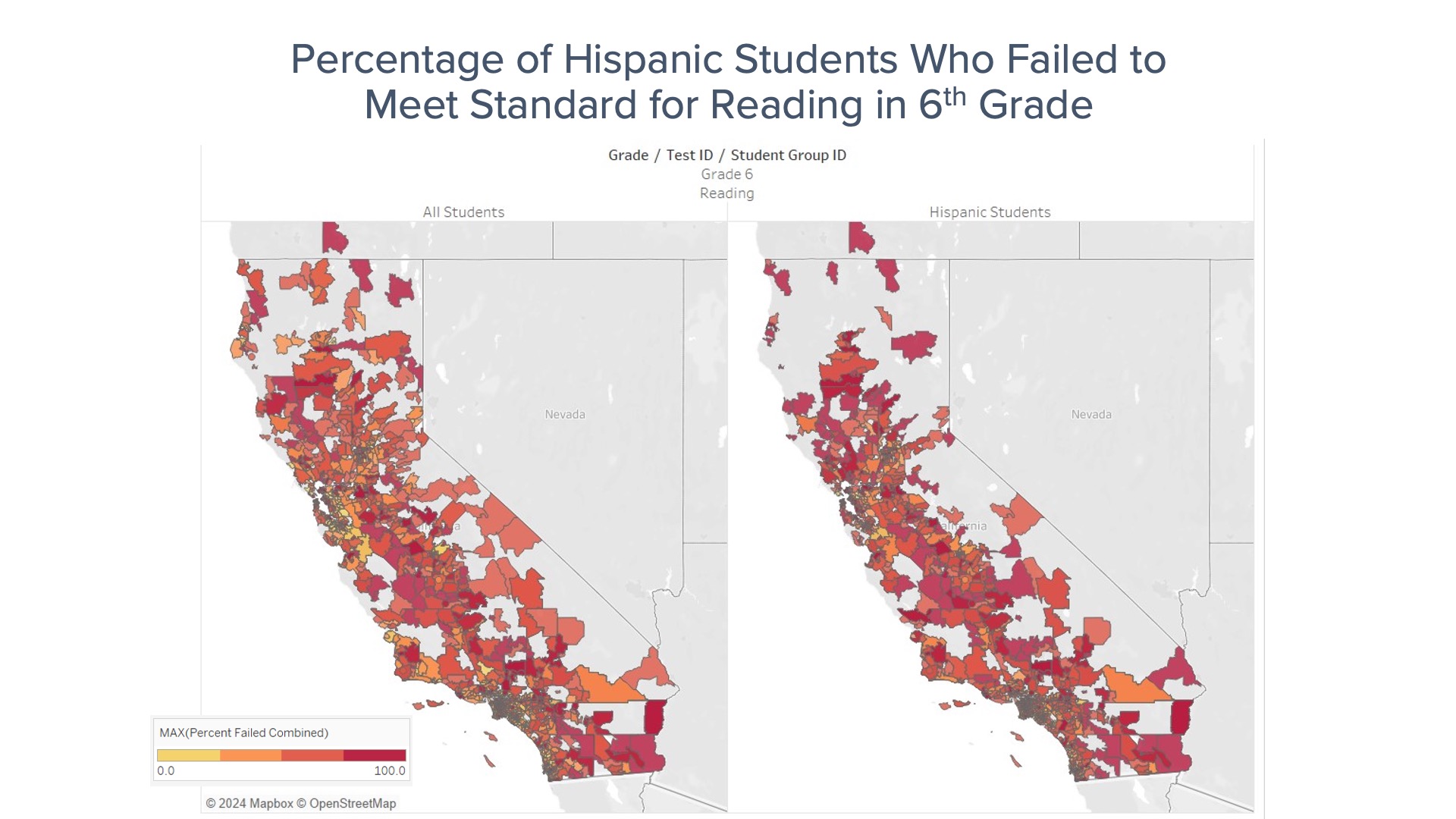
In 1983, the National Commission on Excellence in Education declared that “the educational foundations of our society are presently being eroded by a rising tide of mediocrity that threatens our very future as a nation and a people.” Forty-one years later, much the same can still be said about the state of our education system in California.
Nowhere is failure more disturbing than in reference to California’s close to 5.9 million public school children – the largest K-12 public education system in the country. In fiscal year 2023-2024 California will spend about $128 billion on K-12 public education, an amount exceeding the entire budget of all states except New York. Despite this level of spending, about 75 percent of California students lack proficiency in core subject areas based on federal education standards.
These worrying results occurred even as spending soared. In the year prior to the pandemic, large numbers of students were already struggling to meet grade-level expectations. Now, two out of three California students do not meet math standards, and more than half do not meet English standards on state assessments. Overall, 46.66% of California public students are at or above grade level for English Language Arts or ELA (reading, writing, etc.), while only 34.62% met or exceeded the math standard on the Smarter Balanced 2023 tests.
How California fails Latino and other minority students
Latino students, who constitute 56.1% of California’s public-school students, are primary casualties of these aforementioned achievement gaps. According to the latest California testing results, only 36.08% of Latino students met or exceeded ELA proficiency. Only 22.69% met or exceeded proficiency standards in math. According to the latest National Assessment of Educational Progress (NAEP) – commonly referred to as the “Nation’s Report Card” – California 4th graders scored lower in mathematics proficiency than those in 29 other states/jurisdictions, with only 30 percent at or above the NAEP standard. California only exceeded five states/jurisdictions. Latino students in the state had an average score that was 27 points lower than that of White students. This performance gap is not significantly different from that in 2000 – almost a quarter century ago!
In contrast, 41% of Florida’s 4th graders and 38% of Texas’ 4th graders scored at or above the level of proficiency in math, significantly better than their California counterparts. Florida’s Latino students had an average score that, while still troubling, was only 17 points lower than that for White students — 10 points better compared to California. Texas’ Latino students had an average score that was 21 points lower than that for White students – worse that Florida’s but better than California’s.

Reading outcomes for California’s 4th graders showed poor outcomes as well. Overall, just 31% of 4th graders scored at or above the level of proficiency in reading. California’s Latino student had an average score 29 points lower than White students. This performance gap is not significantly different from 1993! 39% of Florida’s 4th graders scored at or above proficiency level in reading.
Overall, Latino students in both Florida and Texas outperformed those in California.
California’s education system is deeply flawed. The most powerful database of educational outcomes for California’s students is the state’s own Smarter Balanced test. According to the Smarter Balanced test, only one in three students met the standard in math. Scores on that exam showed a paltry 27.35% of 11th graders met or exceeded proficiency standards in math and just over half — 55.41% — met or exceeded proficiency standards in ELA.




These dismal math and ELA proficiency outcomes threaten a trajectory for upward mobility for Latino students in California. Stark gaps for Latino students have perniciously persisted for decades, irrespective of geographic region or the approximately 1000 school districts in California.
Mapping Systemic Failure
Consider these disturbing statistics:
In Los Angeles Unified School District — the largest school district in the state — Latino students fall behind their White counterparts in ELA by some 30 percentage points: 65.4% proficiency for Whites; 35.33% proficiency for Latinos. Similar gaps exist for Math as well: 54.97% proficiency for Whites; only 24.29% proficiency for Latinos.
In San Diego Unified School District, the gaps are even greater: 72.11% ELA proficiency for White students; only 38.21% proficiency for Latino students. In math, it is 64.81% proficiency for White students; 26.1% proficiency for Latinos.
In Sacramento City Unified School District, in the shadow of the State Capitol, White students have a 60.05% ELA proficiency while Latino students only have 30.57%. In math, White students show a 49.31% proficiency level, contrasted with 20.46% for Latino students.
In the Coachella Valley School District - on the eastern side of the state and a high poverty community — all students fare dismally, underscoring the state neglect of its more rural, lower-income, farm working communities. But once again, there are large achievement gaps between Latino students and White students. Only 13.83% of Latino students meet or are proficient in math compared with 17.81% of White students. In ELA, only 30.66% of White students meet or exceed proficiency, and only 26.11% of Latino students.
We demonstrate these ominous trends in the maps above. The reality is simply too stark to ignore.
Read the full report (PDF; this section starts on page 20)
Sen. Gloria Romero (Ret.) was elected to the 24th Senate District in 2001 and served as Senate Majority Leader—the first woman to ever hold that leadership position in the history of the California State Senate. Romero holds a PhD in Social/Personality Psychology and is Professor Emeritus at California State University, Los Angeles. She is the author of California’s groundbreaking Romero Open Enrollment Act, also known as the “Parent Trigger” law, which provides opportunities for school choice for parents of children trapped in chronically academic under-performing, failing schools. She is the co-founder of the innovative independent charter school, Explore Academy, in Orange County, California.
Photo: César Chávez Elementary in San Francisco, by Wally Gobetz, via Flickr, under CC 2.0 License












